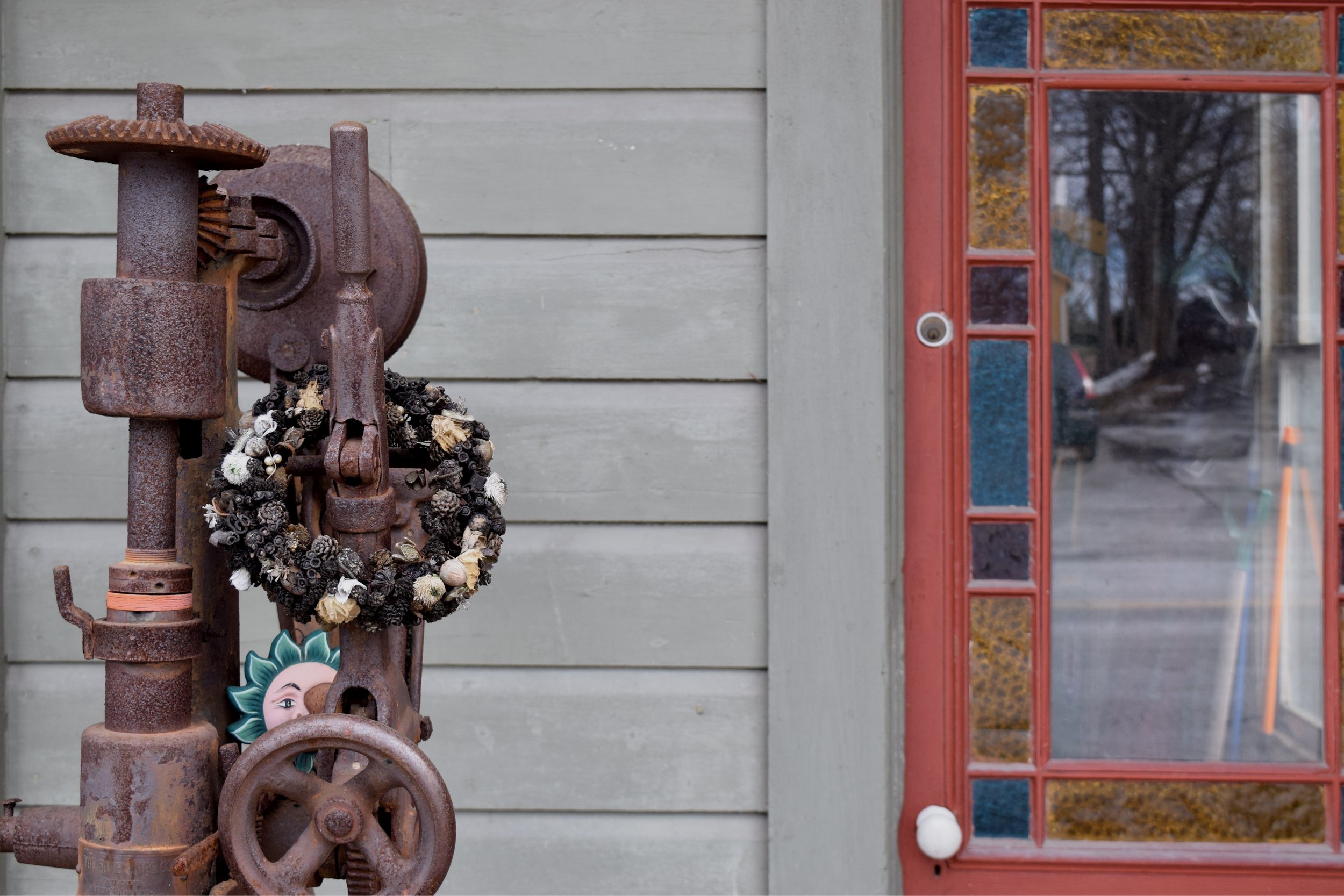Germantown is a town in Columbia County, New York. The 2010 census recorded a population of 1,954.
We’re located in the southwestern part of the county, along the east side of the Hudson River.
Our Process
Linking the present to the past allows us to see our interconnected stories. To do this, we created a timeline that begins in the present and allows you to work your way back in time into the colonial and pre-contact times.
In the near future, we’d like to create a more interactive experience for users of all kinds to learn about Historic Germantown, from way back then to today.
Sequence of Events
The following content was written in collaboration with the Germantown Historian.
The Passage of Time and Natives
The following content is written in collaboration with FOHG Advisor, Christoph Lindner.
Along the central reaches of the Hudson, the remains of Atlantic sturgeon have come to light from that era in pits that also contain deer bone and hand-sized chipped blades of flint for butchering. The oldest known food refuse from this huge fish occurred at the Indigenous encampment on Sunset Circle.
Not far across the river from Germantown, a few miles up Catskill Creek, archaeologists, working in advance of a mega-Walmart, found the Indigenous site of Wechachkeek, or Place of Wigwams, near a Dutch trading post of the 1600s. The discovery of ancient skeletal remains, with advocacy by the Munsee Mohicans and local residents, persuaded the State Archaeologist to advise the developer to not further disturb the site, which was layered with occupational vestiges from several centuries before.
The New York State Museum identified a small amount of human burial bone near the river bank across from Germantown, dating to around two thousand years past, based on accompanying copper artifacts that suggest sources in southern Ohio. The Museum also excavated a 13,000-year-old flint quarry and tool-making site at West Athens Hill, a few miles north of Catskill, one of the earliest traces of Indigenous activity in the Northeast.
-
01. Indigenous Roots & Colonization
The Stockbridge-Munsee Mahican Community in Wisconsin today most actively represents Indigenous heritage in the central Hudson Valley, although the Delaware (Munsee Lenape) nations maintain an abiding interest in ancestral issues hereabouts. People from both communities historically joined at Stockbridge in northwest Massachusetts and at the German Moravian mission of Shekomeko, near Pine Plains in New York’s Dutchess County in the early 1700s.
-
02. Indigenous Relations & Disputes
British militia pushed the Munsee Lenape out of the Hudson Valley in 1746, the same year that Germantown residents probably built the original Parsonage. The Mahicans from Shekomeko may have passed by the Parsonage in their flight to Bethlehem, Pennsylvania, seeing its occupant as protective due to his religious character and German-speaking congregation. The refugees might have left at least one chipped flint blade and several quartz crystals that archaeology has uncovered near the early foundation alongside Maple Avenue.
-
03. Founding of Germantown & Indigenous Relocations
New York State Museum scientists and local avocationalists have excavated pottery fragments from a site in Germantown on Sunset Circle near the confluence of the Roeliff Jansen Kill and the Hudson River. The designs on the potsherds have enabled the construction of a chronology for Indigenous encampments in the watershed. Inland, along the same creek in Clermont, permit-driven investigation, in advance of a pipeline’s emplacement, found the earliest definite traces of corn in the Northeast, back to almost 1,200 years ago.

